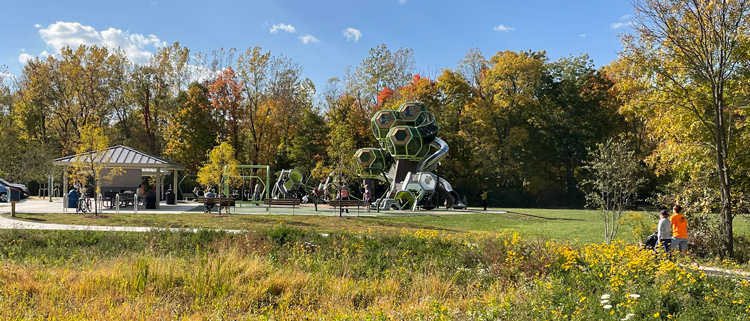By BILL SCHMIDT
Guest Columnist
 As landscape architects, we are always striving to advocate for and create an understanding of what we do. While we contribute to the aesthetic appeal of the projects we work on, our core focus is crafting spaces that transcend, inspire emotional responses, and curate unique, memorable experiences.
As landscape architects, we are always striving to advocate for and create an understanding of what we do. While we contribute to the aesthetic appeal of the projects we work on, our core focus is crafting spaces that transcend, inspire emotional responses, and curate unique, memorable experiences.
Consider the 9/11 Memorial, designed by landscape architect Peter Walker and architects Michael Arad and Daniel Liebeskind. Every element was carefully chosen to encourage a sense of somber reflection. The memorial’s focal points, two waterfall pools, symbolize the absence of the World Trade Center towers, with water flowing into them offering a tranquil space to reflect on the tragedy of the loved ones lost.
Landscape architecture is not just about making things look pretty, it’s about creating spaces that promote physical, mental, and social health through our natural world. Let’s delve into this concept by exploring four psychological benefits of exceptional design:
- Reduced stress & anxiety
In our fast-paced world, one often-overlooked aspect of landscape architecture holds immense importance: its impact on our mental health. Stepping into a thoughtfully designed open space is a powerful antidote to the stress and anxiety of our daily lives. Scientists have proven time spent in nature triggers a drop in cortisol, the stress hormone, and consistently reduces symptoms of both anxiety and depression.
- Improved cognitive function
Studies have shown that exposure to nature can improve focus, concentration, memory, and creativity in a number of ways. Landscape architects can utilize this knowledge to design spaces with the end user in mind. For example, a park space that incorporates visually interesting textures and colorful plants in its design stimulates the visual cortex of the brain, which can result in a measurable increase in cognitive function over time.
- Foster social connections & community building
Humans are naturally social creatures and need connection to thrive. Well-designed outdoor environments can help build new relationships and communities. Parks, plazas, public gardens, and public spaces provide opportunities for those with shared interests to gather and interact.
- Encourages physical activity
Despite it being well-known that physical activity is essential for both physical and mental health, many people find it difficult to carve time out of their daily lives to get active. Studies have shown people are more likely to exercise when they’re enjoying the environment they’re in. Outdoor spaces with features like walking and biking paths, playgrounds, and public fitness areas encourage physical activity in fun ways.

Carmel’s Meadowlark Park offers residents a place to get moving or just take in the scenery and relax. (Photo provided)
The value of well-planned landscape architecture extends beyond the monetary investment in the project by significantly improving quality of life. In 1910, famed landscape architect and superintendent of the Chicago Park District, Jens Jensen, was quoted saying, “We all need the living green, or we will shrivel up inside. To make the modern city livable is the task of our time.”
Over 100 years later, science is affirming the benefits well designed green space plays in our lives. From community parks to corporate offices, this impact has been well documented in a variety of industries. In the realm of business, well-designed spaces contribute positively to office culture, fostering work retention and enhancing employee satisfaction. In healthcare settings, it translates to quicker recovery times, shorter stays, and a more positive mental state. Within educational institutions, it manifests in elevated test scores and improved focus.
With the ability to shape environments in ways that promote a community’s overall well-being, landscape architecture emerges as a transformative force, influencing the human experience.
Bill Schmidt, PLA, ASLA, LEED AP, is the Director of Landscape Architecture at Weihe Engineers, Inc.


Jens Jensen designed parks and landscapes to soothe the souls of the denizens of Chicago at a time when it was considered the worst place on earth to live. He personally did the work to set aside landscapes for the public – parks all over the Midwest and the Indiana Dunes National Park. Now we’re in the throes of climate change and social upheaval and we need “the living green” more than ever. @JensJensenMovie